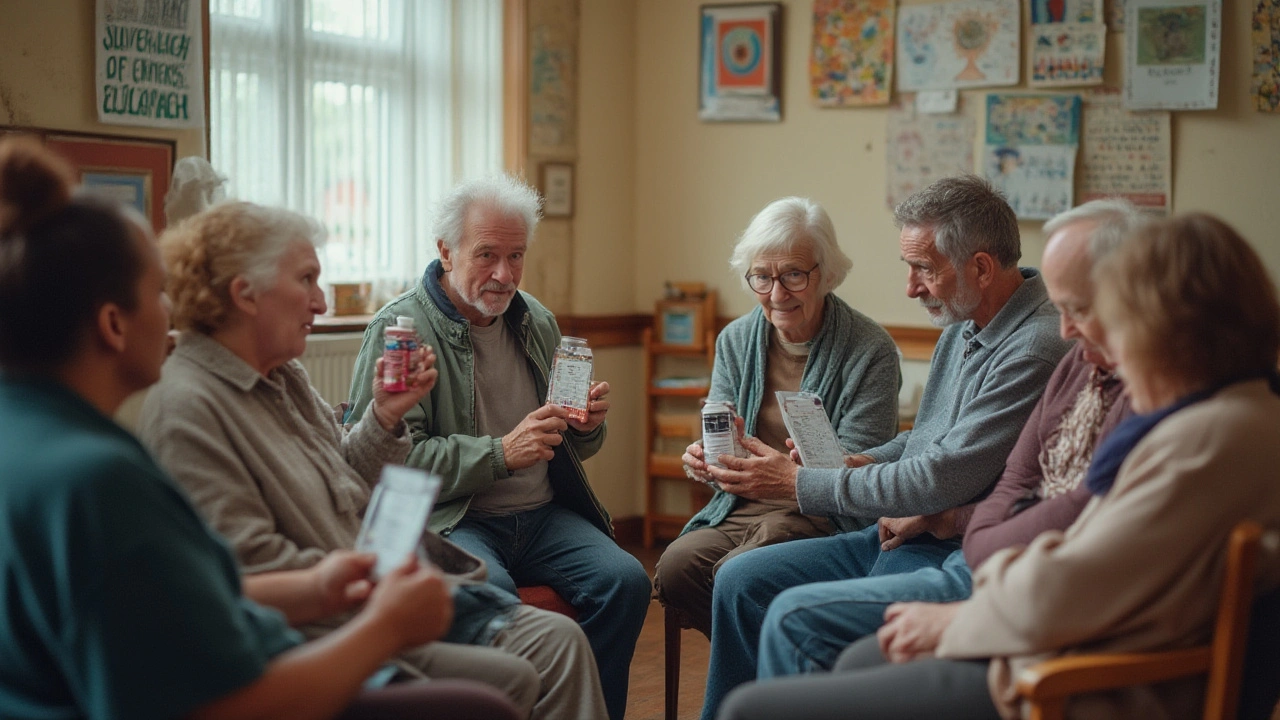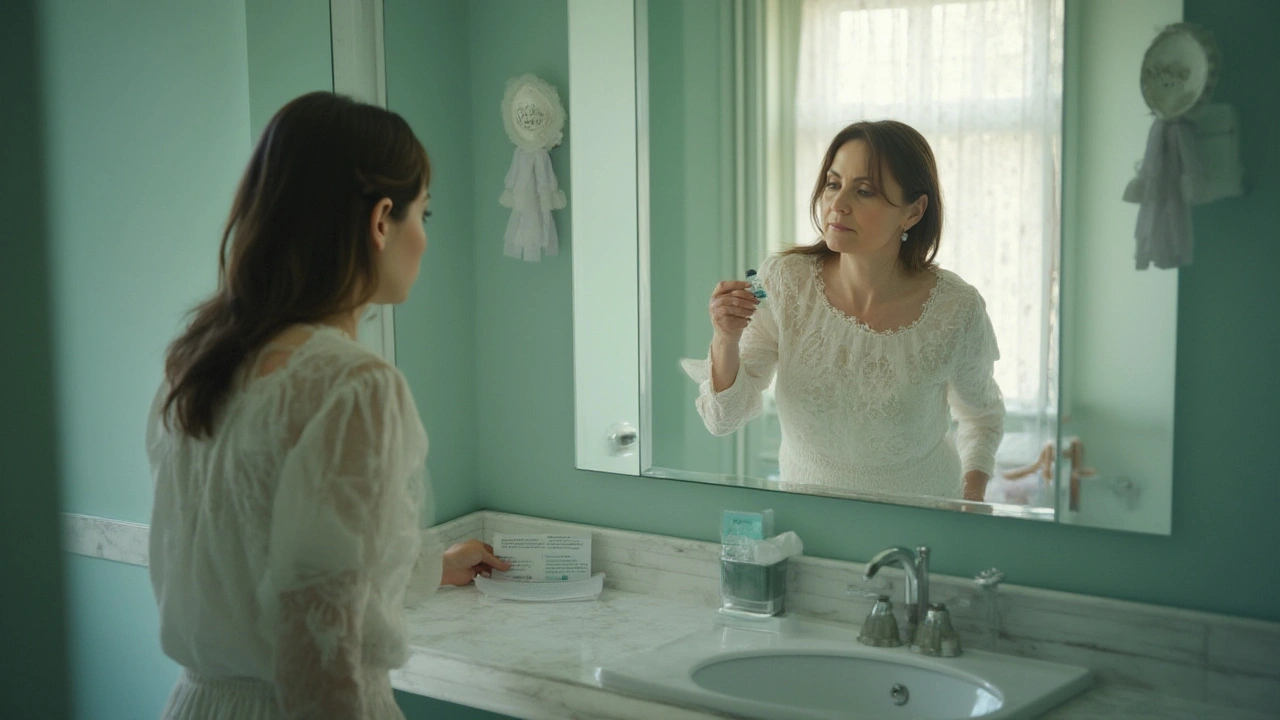Dropped your keys? Forgot your glasses? These tiny annoyances barely register for most people. But when it comes to glaucoma, losing your vision isn’t some slow fade to black that only happens in the movies. It can creep up without a big warning sign. If you’re riding the wave of long-term glaucoma therapy, especially with dorzolamide eye drops, daily decisions actually matter more than you might think. Here’s what eye docs rarely explain, and what decades of Canadian eye care experience actually looks like once you step out of the pharmacy.
Why Dorzolamide Keeps Coming Up in Glaucoma Therapy
There’s a good reason dorzolamide is a household name for eye drop users with glaucoma. Instead of just managing symptoms, it gets right at the core problem: high pressure inside the eye, or intraocular pressure (IOP). It works by blocking the carbonic anhydrase enzyme. That enzyme? It makes fluid in your eye. Less enzyme activity, less fluid. That translates to less pressure that damages your optic nerve.
This isn’t just old news from the late ‘90s. A modern guideline from the Canadian Ophthalmological Society lists dorzolamide as one of the safest, most reliable starts for anyone who can’t handle beta-blocker eye drops. With an average drop of about 20-25% in IOP, dorzolamide is no slouch. That’s not theory — that’s what you see in clinic after clinic.
Catching glaucoma is one thing. Keeping it under control for the long haul is another. The Canadian Glaucoma Society shares that about half of folks with glaucoma will need more than one medication at some point. Dorzolamide regularly gets mixed with timolol (making Cosopt, for the pharmacy curious). That’s because managing pressure with two hits—one stopping fluid creation and one helping fluid drain—is often better than either solo.
Yet no drop, no matter how well it works, is a free ride. Even the most reliable bottle comes with its own dos and don’ts. There’s a whole world behind that little cap.
The Long Game: Tips for Chronic Dorzolamide Eye Drop Use
Anyone can remember their eye drops for a week. But year after year? That’s a challenge you can’t appreciate until you’re deep into the routine. Real talk: missing doses isn’t just forgetfulness, it’s the most common way for pressure to sneak back up and start harming those fragile optic nerves again.
For long-haul users, the first thing to master is drop technique. Why? Half a drop running down your cheek is half a drop not working in your eye. Here’s how to do it the way eye nurses do:
- Wash hands. Always. Doesn’t matter where you are — you don’t want an eye infection on top of glaucoma.
- Tilt your head back, look up, and gently pull down the lower eyelid to make a little pocket.
- Aim for the pocket, not your eyeball. Squeeze the drop, then close the eye gently for a full minute.
- Don’t blink fast or squeeze tight. Just relax. Putting a finger on the inside corner of your eye (by your nose) for a minute can help keep the drop where it belongs.
Tired of the bottle stinging? That’s not rare. Dorzolamide uses preservatives that can irritate. If you can snag the preservative-free version (your optometrist has to prescribe it and it’s pricier), it could help. Also, storing drops at room temperature—not in the fridge—often cuts back on sting.
A common surprise: some folks on dorzolamide develop dryness, redness, or even a funny taste in the mouth. The mouth thing happens because the tears (and some of the drop) drain from your eye through little holes that connect to your throat. Pinching your tear duct for a minute after using the drop seriously helps — try it next time.
Sticky eyelids or blurry vision for a few minutes afterward are normal. If you wear contacts, talk with your eye doc. Most will tell you to pop the lenses out, use your drops, then wait 15-20 minutes before putting the contacts back in.
Sticking to a schedule matters. Using a reminder on your phone, or tying your drops to a daily habit (like brushing your teeth), keeps you from forgetting. Can’t remember if you already dosed? Make a quick tick on a wall calendar or note app. It’s not rocket science, but it works.

Monitoring Your Eye Health: Beyond the Bottle
Staring at that little brown bottle of dorzolamide every morning isn’t really a win unless you’re keeping tabs on your larger eye health story. Baseline checks and regular follow-ups aren’t just tradition; they’re survival moves for your sights.
Every few months, you’ll get your IOP checked in the clinic. That puff-of-air machine tells how well you’re maintaining pressure. But there’s more: your eye doc probably uses a visual field test, measuring any side vision loss you might not notice. If you have a test print-off that looks like a heat map, this is it.
Optical Coherence Tomography (OCT) scans are now everywhere in Canadian eye clinics. These machines give 3D snapshots of your optic nerve and retina. You get numbers for retinal nerve fiber layer (RNFL) thickness, and the clinic monitors these over time. Thinning? That’s a red flag your doc won’t ignore.
Beyond the doctor’s office, it pays to pay attention at home. Notice more glare or hazy vision? A weird halo around lights at night? Don’t play tough—bring it up, even if your last pressure reading was fine. Pressure spikes and optic nerve changes sometimes show up before you “feel” them. You know your eyes better than anyone else — if something feels off, it probably is.
Tracking your own symptoms may sound tedious, but it makes a real difference. Try keeping a quick log in your phone with dates and any symptoms (blur, redness, sting, sudden pain). Patterns matter to the eye doc when deciding on your next steps.
No pain? No problems? That doesn’t always mean no progression. Glaucoma is famously sneaky. Even if daily life doesn’t feel different, the disease can silently chip away at vision. That’s why follow-up appointments aren’t optional — they’re part of the recipe for keeping good vision as long as possible.
Here’s another tip: share your full medication list with your eye doctor every visit. Some systemic meds — like certain diuretics or asthma drugs — can bump into dorzolamide or impact eye pressure. Caffeine, too, isn’t as innocent as it seems. More than two cups of coffee per day can actually subtly boost eye pressure in some folks.
Knowing the Risks: Side Effects, Changes, and What to Watch For
Hearing about possible side effects can make anyone nervous. Dorzolamide is pretty well tolerated, but some long-term users do run into trouble. Eye irritation leads the pack, showing up as burning, stinging, or red eyes. If your eyes suddenly get worse, aren’t just a little red, or if you spot swelling or discharge, call your doctor. In rare cases, dorzolamide can trigger an allergic reaction—think extreme eyelid swelling or crust, not just mild itch.
Headaches, mild fatigue, or the occasional taste change are documented, but usually not deal-breakers. About 1 in 100 people get more serious side effects, like cornea edema (clouding at the front of the eye) or a drop in vision. These are rare but worth knowing. If you’re curious about detailed risks or want to dig into the nitty-gritty of long-term side effects of dorzolamide, there’s a helpful guide online.
There’s also some real talk about preservatives. The ones in most dorzolamide bottles (like benzalkonium chloride) can worsen dry eye, especially over years. If your lids start to get crusty or sore, ask about preservative-free options or research “punctal plugs” (tiny eyelid inserts) if dry eye is making life miserable.
An extra point: dorzolamide is processed in your kidneys. If you have any kidney issues, let your doctor and pharmacist know. Sometimes dosage tweaks or extra bloodwork might be needed.
Table below sums up the typical side effects and how often they happen (based on real-world Canadian clinic data):
| Side Effect | Frequency | What to Do |
|---|---|---|
| Burning/Stinging Eye | ~15% | Try preservative-free drop; use artificial tears |
| Eye Redness | ~10% | Monitor; if severe, call doctor |
| Bitter Taste in Mouth | ~5% | Pinch tear duct post-drop |
| Dry Eyes | ~8% | Add preservative-free lubricating drops |
| Blurred Vision (temporary) | ~3% | Wait, avoid driving after drops |
| Allergic Reaction | <1% | Seek medical help fast |

Sticking With It: Lifestyle, Adherence, and Tech Tricks to Make It Easier
Managing any long-term therapy takes more than just “remembering” to use your bottle. For glaucoma, most vision loss actually comes from inconsistent use or dropping therapy altogether. Life gets in the way, but you can actually stack the deck in your favor.
If drops are scheduled around your daily routines, you’ll use them more reliably. For instance, attach the first dose to your morning face wash, and the evening dose with brushing your teeth. Keep your bottle in a visible spot — right by the toothbrush or next to the pill organizer—so you’re not always hunting for it.
There are also free smartphone apps made for eye drop routines: MyTherapy, Medisafe, or EyeDropAlarm. These send reminders and track if you miss a dose, creating a subtle “guilt trip” that actually helps a lot of users.
Travel a lot? Pick up a zippered toiletries bag just for your drops, and stash a copy of your Rx in your wallet. Air travel dries eyes—stashing lubricating drops with dorzolamide is smart. If you’re heading somewhere with big temperature swings (lots of us in Canada know that pain), keep the bottle cushioned and away from direct heat/cold. Room temp—up to 25°C (77°F)—is perfect.
Sticking with your eye doc is as crucial as sticking with your drops. Missed appointments kill more sight than forgotten doses, as problems can ramp up subtly. Many BC clinics now text reminders or offer online portals to book and reschedule easily—don’t put it off if you need to change.
Family and friends can help, even if they know nothing about drops. Even just a casual “You used your drops today?” in your group chat is the kind of nudge that keeps the chain unbroken.
If bottles confuse you—especially if you’re on more than one—ask for color-coded labels (most pharmacies in Vancouver do this) or use a permanent marker. Pairing the time of day with different colors stops dangerous mistakes.
Noticing medical advances? Laser therapies and even long-acting implants are out there now, but drops like dorzolamide aren’t leaving Canadian clinics anytime soon. The simplicity and low risk (when used right) put them at the front of the doctor’s treatment playbook.
Your daily grind with eye drops isn’t just about preventing disaster. It’s about stacking every card in your favor, using a mix of old-school tricks and new-school tech. The stakes are high, but with a few simple twists, managing glaucoma day-to-day does get easier — and the payoff for your future sight is hard to overstate.


Write a comment